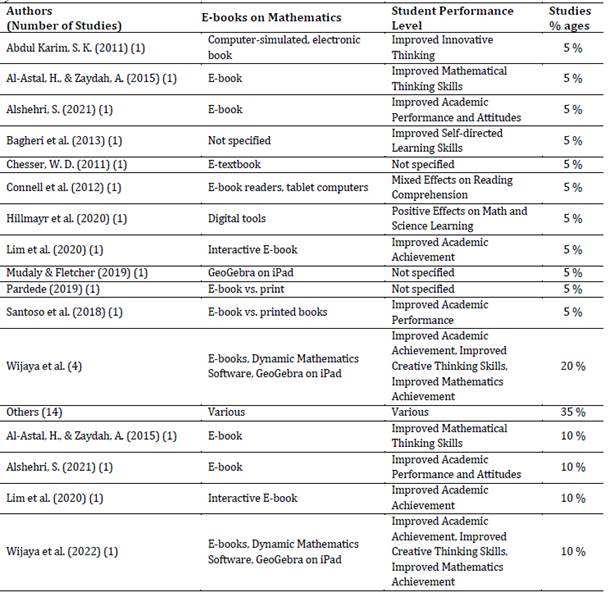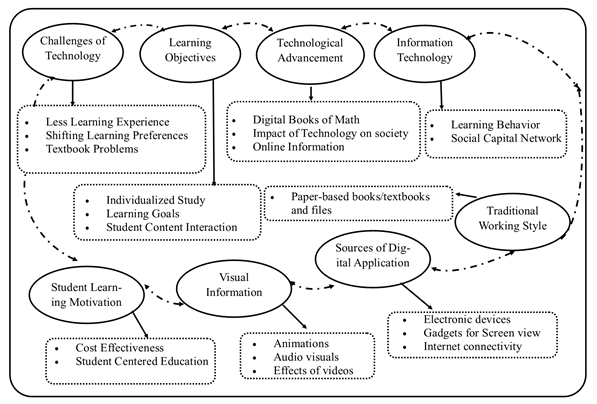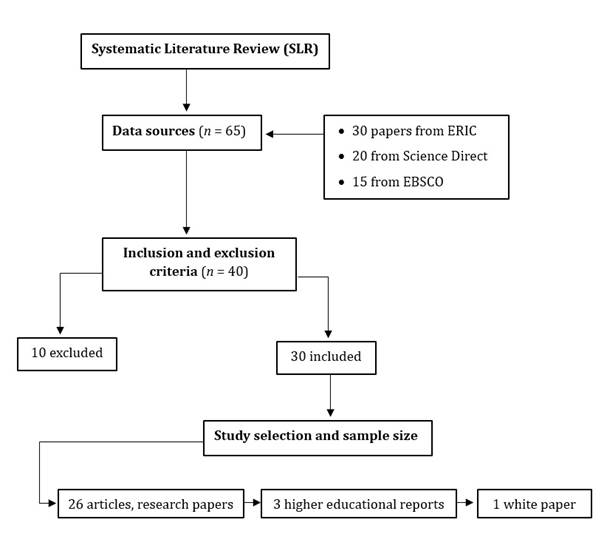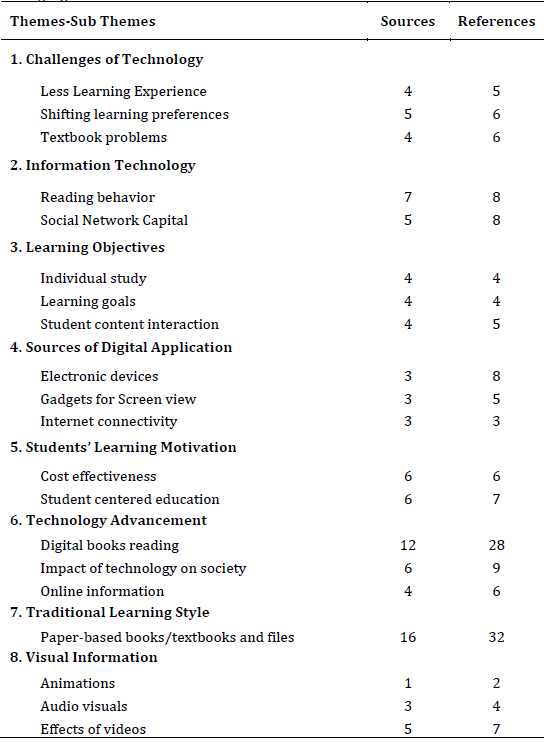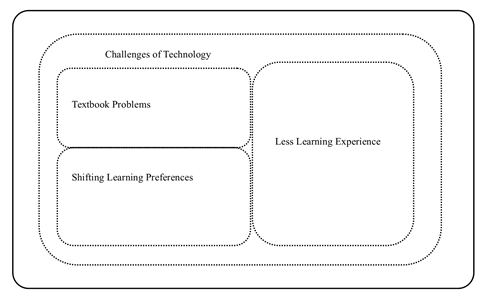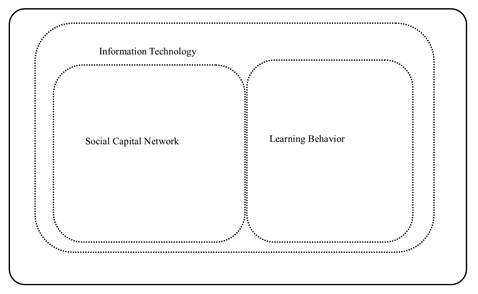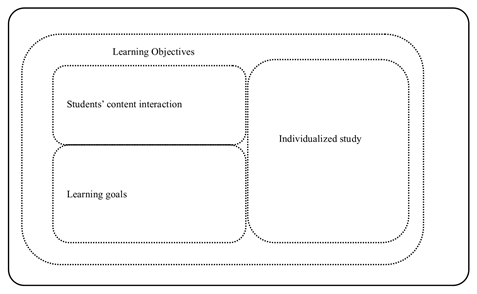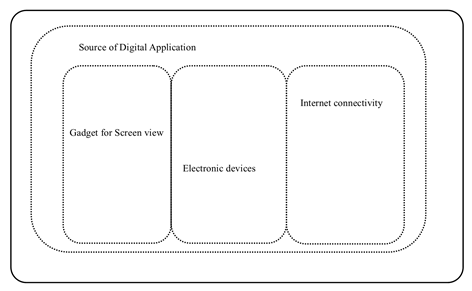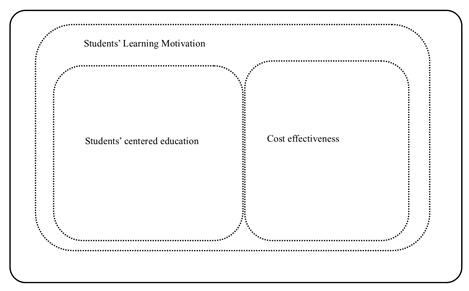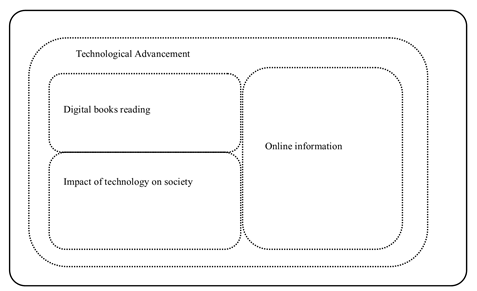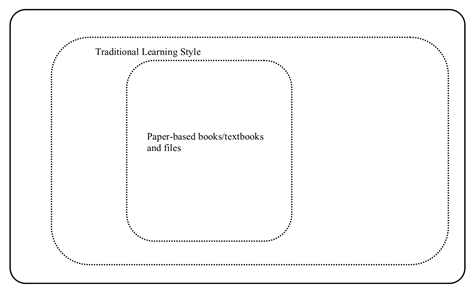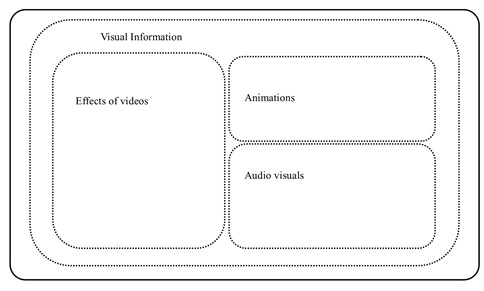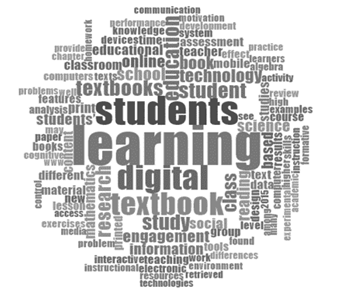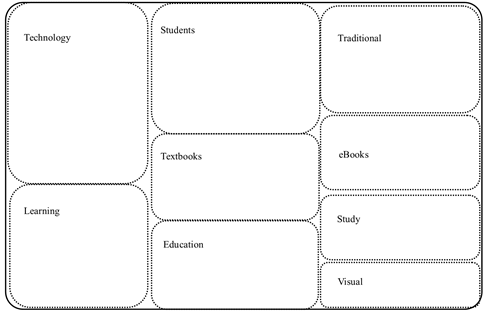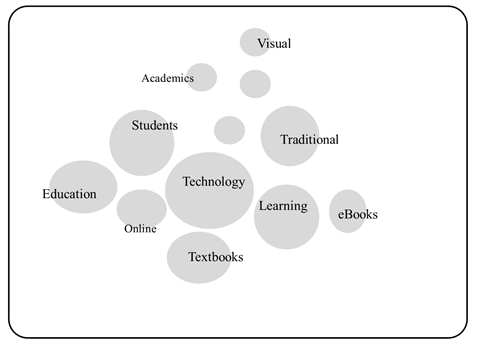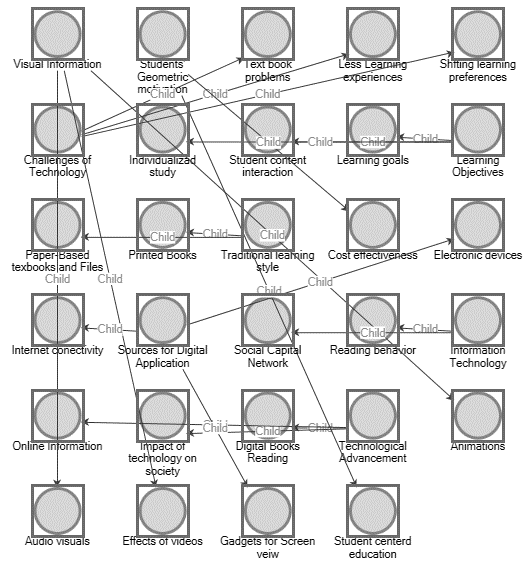Practical implications
-Educational Policy Development: Policymakers should carefully integrate technology into education without overshadowing traditional methods. By supporting a balanced approach that includes both digital and printed materials, policies can address shifting learning preferences and mitigate technology’s potential drawbacks, such as diminished learning experiences.
- Leadership in Education: School leaders should allocate resources to provide both digital and traditional educational tools. Ensuring access to reliable internet, electronic devices, and printed textbooks will help create a more inclusive learning environment. This approach equips all students with the tools they need to succeed, regardless of learning style.
- Teacher Professional Development: Teachers need ongoing professional development to effectively integrate technology into their classrooms. Training programs should emphasize the use of digital media and visual information to meet diverse student needs. This will reduce resistance to change and motivate students.
- Technology Infrastructure Improvement: Schools must prioritize the development and maintenance of technology infrastructure. Maximizing the benefits of technology in education requires providing students with appropriate devices, internet access, and resources. This will enhance digital learning and overall student performance.
- Specific Stakeholder Guidance: Policymakers, school administrators, and teachers play crucial roles in shaping the future of education. These findings are important for improving learning by addressing challenges and maximizing opportunities in both traditional and digital learning methods. A balanced approach will improve student performance and better prepare them for a rapidly changing world.
Introduction
The textbook is one of the many learning resources in education. It plays an essential role in the discussion and learning that take place in the classroom. However, the printed textbook has transformed in the era of digital advancement and is now commonly known as the digital book or e-book (Suarez & Woudhuysen, 2013). The term electronic book refers to a publication with text and images that can be read on a computer or other digital device (Suarez & Woudhuysen, 2013). Easy accessibility, the integration of Internet services, and other e-book reading technologies like Google Play Books are all contributing factors to the growing popularity of digital books (Dado et al., 2016). Additionally, e-books have unique features such as word or phrase search capabilities, bookmarks, word highlights, font size adjustments, and the ability to use various multimedia effects like animations, oral reading, sound effects, and music. These features make e-books more popular than traditional books, especially among younger readers (Lim et al., 2020). Even while traditional books are still widely accepted, e-books are being recognized for providing a more comfortable and convenient reading experience.
The percentage of students who have personal electronic devices is growing gradually year by year. They professionally use portable electronic gadgets such as tablets, smartphones, and others (Budi Santoso et al., 2018). Considering the growing popularity of mobile devices, publishers are making many textbooks available in digital format for various devices. So, a wide variety of electronic learning characteristics are expected to develop exponentially over the next few years (Ulum, 2022). Sadly, like with many other technology developments, educational research to demonstrate the efficacy of e-books in student learning takes a significant period of time. Mobile technology, for example, is underperforming in terms of development and acceptability (Mudaly & Fletcher, 2019).
In education, the use of technology tools and media has been assessed in several ways, but the improvement in student performance has been the most common measure of effectiveness. Learning has typically been regarded as a cognitive capacity and quantified by one’s grade or score on a proficiency test (Pardede, 2019). While grades and test scores are considered credible indicators and should be examined carefully, they may not be the best metric for students in education (Lim et al., 2020). In addition, assessing learning based only on its cognitive aspects is a limited approach. Bloom et al. (1956) proposed that education should be seen as a process that takes place on three levels: cognitive, affective, and psychomotor. In other words, learning involves acquiring factual information about a subject, forming sentiments and perspectives towards that subject, and motivating participants to engage in activities and experiences directly relevant to the subject.
Research Questions
The following are the primary research questions to better understand how e-book plays a role in education and how it affects students’ performance in mathematics.
How do e-books help improve students’ performance in their mathematics learning?
What specific features or functionalities of e-books contribute to the observed improvements in students’ performance in mathematics learning?
Are there any differences in the reported effects on student performance based on the type or format of e-books used (e.g., interactive vs. static, multimedia vs. text-only)?
Literature Review
Technology and Learning Performance
Technology integration into education has undeniably changed teaching and learning approaches. One of the notable developments in this regard is the advent of e-books. Several studies have been conducted to understand the effects of e-books on student performance, especially in mathematics education. Technology brings an enhancement in learning experience. E-books often incorporate multimedia elements such as videos, interactive graphs, and quizzes, which can enhance understanding and engagement. Studies suggest that these interactive features lead to a deeper understanding of mathematical concepts. For example, Smetana and Bell (2012) found that interactive e-books can significantly improve students’ science learning outcomes, which could be extrapolated to mathematics due to the similar nature of content delivery and engagement strategies. Amalia et al. (2021) demonstrated the effectiveness of e-books in improving mathematical literacy and entrepreneurial spirit in vocational high school students. These studies collectively suggest that e-books and digital textbooks can lead to improved performance in mathematics through their interactive and engaging features. The adaptability of e-books allows for personalized learning experiences. They can adjust the content presentation based on the learner’s progress and understanding, making it possible to cater to diverse learning needs and paces. This customization can be particularly beneficial in mathematics, where students often have varying levels of proficiency and learning styles.
Positive Influence on Innovative Thinking and Skill Acquisition
Studies have documented the effectiveness of e-books in enhancing innovative thinking among students. Abdul Karim (2011) studied the impact of electronic books on developing creative thinking among science students and found positive outcomes. Similarly, Al-Astal & Zaydah (2015) demonstrated the effectiveness of an e-book in fostering mathematical thinking skills and enhancing the acquisition of mathematical concepts among 5th graders.
Impact on Academic Performance and Attitude
A clear connection between e-books and improved academic performance has been shown in the literature. Alshehri’s (2021) did experimental research of 56 seventh-graders from two middle schools in Abha, Saudi Arabia and revealed that e-books were enhancing students’ academic performance and attitude toward mathematics. Lim et al. (2020) also found a positive correlation between using interactive e-books and students’ academic achievements. In this research, 60 first-year undergraduate students enrolled in the statistics course participated in the quasi-experimental research design and post-test-only control group design.
Enhanced Engagement and Digital Learning Preferences
The shift from traditional textbooks to e-books signifies a broader transition to digital learning. Students of the digital age often prefer online and multimedia-rich resources. Chesser (2011) discusses the e-textbook revolution and the increasing preference of learners towards them. Connell et al. (2012) further researched the effects of e-book readers and tablets on reading comprehension and found that these digital tools could facilitate a better understanding, likely due to interactive features and customizable settings.
Potential for Blended Learning Environments
E-books easily integrate into blended learning scenarios. Helsa & Kenedi (2019) highlighted the utility of a platform like Edmodo in blended learning, which can seamlessly incorporate e-books. Such environments combine the best of online and face-to-face instruction, where e-books can be a central resource.
E-books in the Context of Mathematics Education
In mathematics, e-books can be particularly impactful. Wijaya et al. (2022) conducted a meta-analysis of the effects of e-books on students’ mathematics achievement and found consistent positive results. This is further supported by Mudaly & Fletcher (2019), who studied the effectiveness of an application like GeoGebra (a dynamic mathematics software) on iPads, demonstrating that e-books or e-resources can significantly enhance understanding and application in mathematics.
Concerns and Cautions
However, it is essential to note that while there are positive impacts, there may also be challenges. Santoso et al. (2018) emphasized the effectiveness of e-books over printed books in rural schools, but this suggests that resource availability and technological infrastructures play a role. Kopcha (2012) pointed out barriers to technology integration, hinting at potential challenges in integrating e-books into all learning scenarios. Therefore, there’s compelling evidence from the literature that e-books have a notable positive impact on student performance in mathematics. They promote innovative thinking, improve academic performance, align with digital-age learners’ preferences, and fit seamlessly into blended learning environments. However, educators and policymakers should be attentive to the challenges and ensure that the transition to e-books is thoughtful and addresses potential barriers.
Table 1 presents the results of a systematic literature review that aims to investigate the impact of e-books on improving students’ performance in mathematics learning. The studies listed in the table have been categorized based on the authors, the type of e-books used, the reported effects on student performance, and the distribution of studies across these categories. The research question addressed by these studies is whether e-books enhance students’ performance in mathematics learning. Upon analyzing the table, it is evident that the studies exhibit varying degrees of improvement in students’ performance in mathematics learning due to using e-books. Among the studies reviewed, a consistent trend can be observed where the majority of studies (65 % in the first set and 40 % in the second set) reported positive effects on student performance, such as improved, innovative thinking, enhanced mathematical thinking skills, improved academic performance and attitudes, positive effects on math and science learning, and improved academic achievement.
In the first set of studies, while each study examined different types of e-books and technologies (e.g., computer-simulated e-books, interactive e-books, and digital tools), the outcomes were largely favorable, showcasing that e-books can positively impact students’ mathematics learning. Notably, studies using diverse e-book formats, including e-textbooks and tablet computers, reported enhancements in various aspects of performance, supporting the idea that electronic resources can benefit mathematics education. The second set of studies further reinforces this positive trend, with a considerable portion (40 %) of studies highlighting improved mathematical thinking skills, enhanced academic performance and attitudes, and increased academic achievement through e-books and related technologies. Additionally, including dynamic mathematics software and tablet-based applications like GeoGebra has positively influenced students’ creative thinking skills and overall mathematics achievement. Nevertheless, it’s essential to acknowledge that a small portion of studies (5 %) did not specify the exact improvements or effects observed. This could be due to limitations in study design, data collection, or reporting standards. Furthermore, the inclusion of the “Others” category with 35 % of studies indicates a variety of findings, which could reflect differences in methodologies, contexts, and types of e-books used across the studies.
Finally, most studies reviewed in the systematic literature review provide evidence that e-books, in their various forms and formats, can contribute positively to students’ performance in mathematics learning. The findings suggest that e-books can enhance innovative thinking, mathematical thinking skills, academic performance, attitudes, creative thinking skills, and overall mathematics achievement. However, it’s important to note that the effectiveness of e-books could be influenced by factors such as the design of e-book content, the integration of interactive elements, students’ familiarity with digital tools, and the instructional strategies employed. Therefore, while e-books show promise as a valuable tool in mathematics education, further research and exploration are warranted to understand better the specific conditions under which they can have the most significant impact on students’ learning outcomes.
E-Book and Students Performance
Academic research has defined and classified electronic books in a variety of ways. Most studies on e-books identify them as digital texts on electronic displays (Alshehri, 2021). These electronic textbooks provide accurate page renderings and reflowable digital content (Jeong, 2012). E-textbooks that can be reflowed make use of a versatile format system that incorporates dynamic media and gives the user the ability to change not only the layout of the e-textbook but also its interactive elements better to fit the display medium (Chesser, 2011). The e-book improves the academic performance when is linked to a better understanding of the concepts with the integration of cognitive thinking to promote mathematics skills. The multimedia support through the audio, video, and other similar features offers an added advantage over the traditional books that are suited for improved learning in students (Al-Astal & Zaydah, 2015). A multitude of research has indicated the improvements in the mathematical comprehensions amongst the students due to added visual aids and audio representations (Alshehri, 2021; Wijaya et al., 2021; Zou et al., 2022).
On the other hand, e-books may not offer a quite level of usability and convenience if they are not well designed (Hillmayr et al., 2020). Also, the students’ performance might be reduced if they are not equipped to use the e-books well (Berg et al., 2010). Although there are multiple studies that have made a comparison between the traditional printed books and the e-books within the educational settings, some studies have shown that there is no difference between student performance either using printed books or e-books. Woody et al. (2010) and Shepperd et al. (2008) found no difference in the improvement of the student’s learning and academic performance despite the fact that e-books were offered with easy access to the supplemental material. In addition, Wijaya et al., (2022) assured that students found digital textbook forms to be usable but uncomfortable due to a lack of accessibility in mobile formats and confined geometric connectivity evident in most previous versions of mobile e-reader devices. The results of multiple types of research also concluded that students preferred traditional printed books (Connell et al., 2012; Korat et al., 2010; Segal-Drori et al., 2010).
Theoretical Underpinnings and Research Analysis
Self-regulated learning is defined as an active, constructive method by which students establish learning objectives and then make an effort to track, manage, and govern their behavior, cognition, and motivation under the direction and restraint of their goals (Dinsmore et al., 2008). Self-regulated students are learners who are metacognitively, behaviorally, and motivationally active and employ techniques to manage their thoughts and regulate resources to achieve individual learning objectives (Zimmerman & Schunk, 2001). Self-regulation and cognitive strategies are two distinct self-regulated learning techniques and strategies. It involves planning, observing, and adapting (Pintrich, 2000). It entails planning, monitoring, and altering of cognition for self-regulation, understanding and comprehension. It utilizes organizational, recollection, and construction cognitive strategies techniques for cognitive stimulation and intrinsic motivation and self-efficacy and intrinsic value (Paris & Paris, 2001).
Self-regulated learning theory is important to textbook learning for in-person and online students utilizing traditional and e-textbook formats because desire to learn and the application of cognitive techniques while learning are highly autonomous parts of the learning process (Butler, 2002). Additionally, previous studies have demonstrated that the format of the text can affect both the cognitive and grueling activity of learning, indicating that the textbook format’s impact on motivation and cognitive processing needs to be investigated more (Abdul Karim, 2011).
Conceptual Framework of the Research Design
After identifying the relationship between digital books and student performance, this research framework is based on the systematic literature review used for qualitative analysis using Nvivo 12.
The categorical relationships among these themes in the context of e-books and their impact on student performance in mathematics learning, how these themes interact and influence each other, forming a complex web that shapes the educational experience in the digital age. F1
Followings are possible relationships that could arise from these conceptualized themes.
1. Challenges of Technology and Information Technology
The relationship is foundational; information technology addresses the challenges of technology in education. For instance, while the introduction of e-books into classrooms introduces challenges such as digital literacy and access disparities, advancements in information technology mitigate these issues through user-friendly interfaces, adaptive learning systems, and increasingly affordable devices.
2. Challenges of Technology and Learning Objectives
Learning objectives can be directly impacted by the challenges of technology. If students face difficulties in navigating e-books due to poor design or if the e-books are not aligned with the curriculum, achieving the desired learning outcomes becomes more challenging. Conversely, understanding these challenges is crucial for designing learning objectives that are achievable within the digital framework.
3. Information Technology and Sources of Digital Application
The development and availability of digital applications are driven by advancements in information technology. The capability of electronic devices and the quality of internet connectivity directly affect the effectiveness of digital applications, including e-books, in delivering content and engaging students.
4. Learning Objectives and Students’ Learning Motivation
Learning objectives that are clearly defined, achievable, and aligned with students’ interests can significantly boost students’ learning motivation. When e-books are designed to meet specific learning goals and facilitate individual study paths, they can cater to student-centered education, thereby enhancing motivation and engagement.
5. Sources of Digital Application and Students’ Learning Motivation
The accessibility and usability of digital applications can influence students’ motivation to learn. E-books that are easily accessible on various devices and come with engaging features such as interactive exercises and multimedia content make learning more appealing and motivate students to engage more deeply with the material.
6. Technology Advancement and Traditional Learning Style
The rapid advancement of technology challenges traditional learning styles, offering new methods and tools for education, such as digital books and online resources. However, it also necessitates a balance, as not all students or educators may prefer or benefit from these new methods over traditional paper-based resources. Integrating technology in a way that complements rather than replaces traditional methods can cater to diverse learning preferences.
7. Visual Information and Learning Objectives
The use of visual information (animations, audio-visuals, effects of videos) in e-books can greatly enhance the understanding of complex mathematical concepts, directly supporting the achievement of learning objectives. Visuals can simplify abstract concepts, making them more accessible and engaging for students, thereby facilitating deeper learning.
8. Visual Information and Students’ Learning Motivation
Incorporating visual information into e-books can significantly increase students’ motivation. Engaging and interactive content can transform learning into a more enjoyable and stimulating experience, particularly in subjects like mathematics, where students might struggle with engagement due to the abstract nature of the content.
Methodology
This research implemented secondary data from scientific articles that were already published. For the social sciences, common information sources include official statistics and information originally gathered for other research purposes (Johnston, 2017). To consider the collection’s generalization, confirmability, and visibility that constitute a systematic literature review (SLR)-a research technique for SLR is required (Booth et al., 2016). Doing comprehensive literature studies helps to reduce any prejudice that could have been evident. Determining the subject of the inquiry is one of the most challenging issues at this stage. It is essential to specify research issues and limitations once the study’s scope has been determined to select the best research method (Del Amo et al., 2018). The search engines used for this study were ERIC, EBSCO, and Science Direct. The articles were from conferences and journals that subject-matter experts had reviewed, and the collection through the existing literature was accomplished on December 29th, 2022.
These resource searches were carried out to acquire data on digital books and student performance in mathematics. Publisher Elsevier is in charge of running Science Direct, an online archive of previously published scientific research. ERIC is a worldwide repository with papers from all around the globe that other professionals have evaluated, and Science Direct serves as academic search citations (Gonçalves et al., 2018; Perevochtchikova et al., 2019). EBSCO provides a papers list, published list, publishing type list, information on the time frame covered by items, or whether the documentation has been peer-reviewed, contrary to the Web of Science, Scopus, and Science Direct. You can benefit from EBSCO ‘s search engine incorporating citations not covered by other sources (Yang & Meho, 2006). Many publications that are accessible and the period that they were obtained ought to be listed, and each resource relevant to the search has to be searched.
However, the number of publications used in the overall SLR assessment was influenced by the search terms that the researcher would use and the anticipated aim (Martinez-Harms et al., 2015). The size and variety of resources used to search for relevant articles can, to some extent, decide the sample size used for analysis (Mengist & Soromessa, 2019). In the first round of searching, 65 papers were retrieved, including 30 from ERIC (to use the comprehensive search strategy), 20 from Science Direct, and 15 from EBSCO. Only 40 further papers produced results through the main section screening after that. The article’s systematic literature review and thematic analysis of the published material included 30 research publications, making the sample size for this study stage 23 articles. A qualitative thematic analysis Software, “Nvivo 12”, is used in the current study to evaluate qualitative data. F2
The PRISMA diagram provides a clear overview of the article selection process. It reflects the rigorous steps to ensure the quality and relevance of the articles in the systematic literature review. This diagram enhances the transparency of the research methodology and demonstrates the systematic approach employed to answer the research question.
Results
The primary aim of this study may be achieved by analyzing the qualitative data collected from the 23 articles. It was developed using the topics discovered in the literature. The issues are analyzed based on the themes shown in Table 2.
Theme 1: Challenges of Technology
The study identified the first theme of challenges of technology, including sub-themes: Textbook problems, shifting learning preferences and fewer learning experiences. The digital textbooks are more alarming and a major technology challenge (Alshehri, 2021). Shifting learning preferences is also another obstacle in the learning process of students and distracts the learning motivation of the students (Helsa & Kenedi, 2019). When incorporating technology and digital media into the classroom, teachers frequently face the following difficulties and worries: Teachers encounter repeated technical and/or classroom problems. (Kopcha, 2012). Today’s key challenges in implementing and integrating technology into classrooms include students’ attitudes, resistance to change, training, time, access, and cost (Hillmayr et al., 2020). The obstacles can be overcome, and technology can fulfill its potential to revolutionize education (Groff & Mouza, 2008; Losbichler & Lehner, 2021).
Because those learners who are more involved in technology learn much more than the students who choose the traditional way, technology allows teachers to customize teaching and modify it to meet the needs of specific students so that every child may achieve their full potential (Bagheri et al., 2013). According to Bienkowski et al. (2012), there are a number of features to learning technologies that have been utilized in education. It encompasses elements of the intake, output, and process of education. It places a strong emphasis on creating processes and procedures for efficient learning (Pardede, 2019). It is the use of scientific understanding in training and education. Enhancing learning and raising educational standards are the two main goals of educational technology (Ulum, 2022). So, technology should improve the processes of learning and teaching and aid educational institutions in operating more effectively since it places a focus on efficiency and quality (Komba, 2009; Santoso et al., 2018). Increased use of technology will improve students’ grasp of the material and the growth of their reasoning, problem-solving, knowledge, and creative-thinking abilities (Wijaya et al., 2021).
Theme 2: Information Technology
The study identified the second theme information technology, including sub-themes: social capital network and learning behavior. Social capital is a collection of actual or potential resources that are linked to more or less institutionalized relationships of mutual acquaintanceship (Bourdieu, 1986, p. 248) and social network refers to structure with several players, some of whom are related to one another through one or more relationships (Knoke & Yang, 2020). The analysis found that social capital network enhances information technology and students’ performance. Also, it stated that learning behavior uplifts the students’ motivation toward mathematics.
Theme 3: Learning Objectives
The study identified the third theme of learning objectives, including sub-themes: student content intention, learning goals and individualized study. The analysis showed that student content intention gives competitive advantages to students’ learning motivation and performance. Also, the study found that the student’s learning objectives increased their knowledge of the educational revolution in this technological era.
Theme 4: Sources for Digital Application
The study identified the fourth theme of sources for digital application, including sub-themes: electronic devices, gadgets for screen view and internet connectivity. The analysis showed that electronic devices and internet connection play a vital role in digital learning for students. In addition, the study found that different gadgets for screen view also significantly impact students’ motivation and learning performance.
Theme 5: Students’ Learning Motivation
The study identified the fifth theme of students’ learning motivation, including sub-themes: student-centered education and cost-effectiveness. The study reported that student-centered education has a significant role in strengthening students’ performance and motivation. On the other hand, cost-effectiveness motivates students to move forward with digital learning.
Theme 6: Technological Advancement
The study identified the sixth theme of technological advancement, including sub-themes: digital book reading, the impact of technology on society and online information. The analysis reported that digital books positively impact students’ performance. The study also stated that the impact of technology on students’ learning process especially using digital text is more beneficial for them.
Theme 7: Traditional Learning Style
The study identified the seventh theme of traditional learning style, including sub-themes paper-based books/textbooks and files. The analysis showed that printed books/textbooks have more value in students’ learning than electronic books. It is also learned that printed textbooks and files are more reliable for the students to grab the concerning knowledge.
Theme 8: Visual Information
The study identified the eighth theme of visual information, including sub-themes that are effects of videos, audiovisuals and animations. According to the analysis, the benefits of videos are more effective for students to learn easily and for a longer period of time. Students do not easily forget what they have learned from videos. Audiovisuals and animation also have a great positive impact on students’ learning performance.
Hierarchy Charts
While using hierarchical diagrams (Figure 3-10), we could more quickly identify the values that should be allocated to the objects and review articles and observe the source code linkages (Zamawe, 2015; McNiff, 2023). Hierarchy charts can be extremely helpful when a user chooses to investigate various data analyses and observe various perspectives. The two fundamental categories from which the diagrams may be divided are tree maps (Figure 12) and hierarchical charts (Richards, 2002). Tree Map assesses and analyzes the structures of the data. Furthermore, it is easy to adapt the hierarchical chart’s curving lines to its rectangle. It makes it simple for us to comprehend the cultural elements that influenced systematic literature review thinking and how SLR assesses student performance by using the figures below to look at digital learning and student performance. The above discussed themes and charts clarify the classification.
Word Clouds
Word clouds are visual representations of the elements that emerge most frequently throughout the content analysis (Zamawe, 2015). The outcomes of a query based on word frequency are also displayed as a word cloud (Saldaña, 2021). The phrase “Learning” occurred most frequently in the current study’s contextual information, the content review. It results from a systematic literature analysis that discusses the challenges and issues of digital books textbooks.
Tree Map
A tree map shows the contribution to the quality of a structure as interlinked geometric shapes with different lengths, breadth, and quantities (Richards, 2002; McNiff, 2023). By examining the sizes of the rectangles, the reader may determine the approximate number of nodes. The number of nodes utilized would focus directly on the rectangle’s length. The rectangle area with the best description is also assessed using a tree map, which is also used to create linkages between the components (Zamawe, 2015). The opposite is represented by the smaller rectangular parts on the right side. The paper asserts that electronic books, mathematics, motivation, and student performance are related to systematic literature reviews. It is noted that learning is the word most commonly used since the study evaluates the impacts of students’ digital learning on their performance, which was deemed important. In the systematic literature review, the terms “digital” and “students” are usually used to denote the scope of the research.
Cluster Diagram
Cluster analysis is an empirical design for grouping references or nodes containing specific words and resemblances coded by nodes/themes (Saldaña, 2021). It shows a comprehensive picture of the nodes/themes and their extraction resources to clarify the differences and overlaps between the nodes/themes and their separating sources. A cluster analysis graphic displays more relationships than differences between sources or nodes compared to other cluster representations. The differences between nodes/themes and their source properties are contrasted in Nvivo 12. The Figure 13 shows how the themes and sub-themes relate to one another.
Project Map
The project graph demonstrates the project’s elements that seem to be under consideration right now (Mortelmans, 2019). Project maps are created to aid in identifying and illustrating the many connections between the data (Braun & Clarke, 2006). In order to evaluate how the data is organized for the analysis, the study mainly provides infographics through elements of the project and comprehension of the link and demonstrates the relationships between the primary and secondary nodes. F14
Discussion
The results gleaned from this study are expansive, touching upon numerous themes pertinent to integrating technology into the educational sphere. Interpreting these findings within the theoretical framework provided in the introduction, we begin to understand the multidimensionality of educational technology’s challenge and opportunity space. The thematic exploration started with acknowledging technology’s challenges in the academic domain. Consistent with Alshehri (2021), digital textbooks have emerged as a significant technological hurdle, possibly due to their usability, accessibility, or integration issues. This finding resonates with the broader discourse on the need for pedagogical shifts in response to technological advancements. Helsa & Kenedi’s (2019) concerns regarding shifting learning preferences further corroborate the idea that today’s learners, being digital natives, might have evolving learning styles and modalities. The challenges highlighted by Kopcha (2012) and Hillmayr et al. (2020), such as resistance to change, echo the sentiment that while technology promises transformation, its seamless integration demands robust strategies and professional development for educators.
The emergence of social capital networks and learning behavior as sub-themes in this category sheds light on the interactive nature of modern learning. These findings underscore the increasingly networked nature of knowledge in today’s world. Furthermore, the positive correlation between learning behavior and motivation toward mathematics might suggest a direct relationship between technology-enhanced learning and subject-specific enthusiasm. Delving deeper into student content intention and individualized study patterns, the results indicate that intentional content consumption might provide a competitive advantage in education. This aligns with the theoretical stance that today’s learners are more autonomous, having the power to personalize their learning trajectories using technology (Walkington & Bernacki, 2020). The importance of electronic devices and internet connectivity reiterates the idea that access to resources remains a fundamental determinant of the efficacy of digital learning. The emphasis on screen-view gadgets further emphasizes the need for ergonomic and efficient learning interfaces.
Identifying student-centered education as a critical driver for performance and motivation substantiates the pedagogical shift towards learner-centric methodologies. The mention of cost-effectiveness also signals a crucial intersection of economics and education, wherein affordability might dictate the adoption and scalability of ed-tech solutions. The theme articulates the broader spectrum of how technology is not just a tool but an evolving entity shaping societal structures. The positive tilt towards digital books and online information sources indicates a more significant shift towards digital-first approaches in education. Contrary to the themes emphasizing digital modes, this theme, which highlights the value of printed textbooks, serves as a reminder of the persistent relevance and reliability of traditional educational tools. It adds nuance to the discourse, suggesting a balanced, blended approach might be the way forward.
The pronounced effectiveness of videos, audiovisuals, and animations underscores the importance of multimodal learning. These findings can be contextualized within the dual coding theory, which posits that verbal and visual information are processed differently and can complement each other in enhancing understanding. The word clouds, tree map, and cluster diagram methods further distilled the themes’ essence, reinforcing the significance of “learning”, “digital”, and “students” in the analyzed literature. Drawing upon these empirical findings, it becomes clear that while digital interventions in education offer immense promise, their effective integration demands a comprehensive, nuanced, and balanced approach.
Conclusion and Recommendation
According to the above-mentioned data and justifications, the authors of the published papers had a favorable opinion towards the e-book. Students are more interested in and prefer using digital texts over printed textbooks since they know that most of their instructors assign digital learning to their students. They have the additional motivation to read digital materials since they are readily available, convenient, and affordable. On the other hand, the findings could not be extended to groups beyond the boundaries of the study. It is recommended that future research involve more published papers from various fields. It is recommended that research look at how students feel about using digital books to acquire more specialist mathematics learning areas including measurement, algebra, and geometry.
The accessibility of e-books will expand students’ ability to use them in a range of academic and public settings, including schools and universities. The current study examines the effects of using an e-book on academic student performance. It highlights the many advantages that e-books offer for increasing students’ motivation to learn and fostering academic success. The use of multimedia in e-books, accessibility, structure, and ease of return; the ability to load the book on tablets and mobile phones; and the titles and texts in the e-book, makes it much easier to use whenever and wherever.
As a method of curriculum management, textbooks are available to enhance learning productivity and effectiveness. The textbook offers ease for the instructor and students, however that does not mean it is without flaws. The recommended e-book has been shown to increase students’ learning outcomes. Interactive e-books can be a solution to the problems with textbooks (printed) - this is demonstrated by the fact that some studies showed the students interactions when using e-books. Despite the positive outcomes of developing an interactive e-book, it’s critical to keep in mind that suitable teaching materials must be tailored to students’ needs. The students must considerably benefit from using the e-books.














